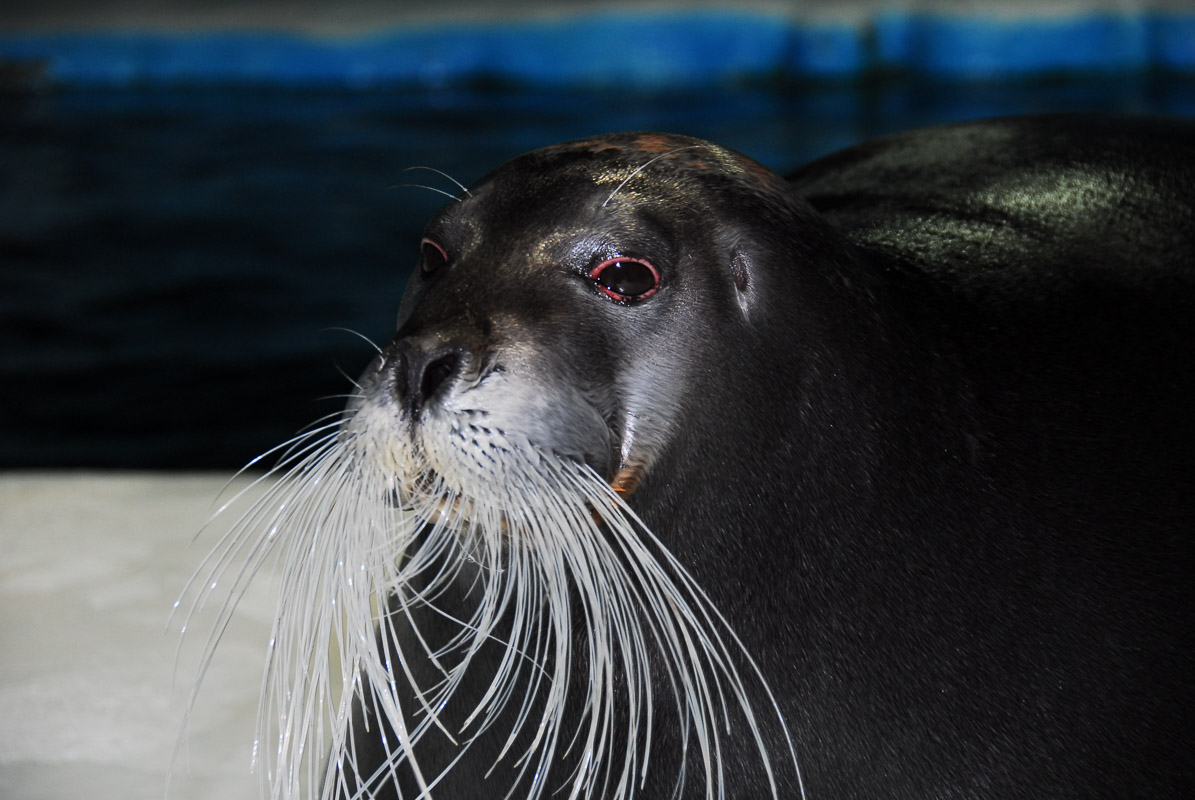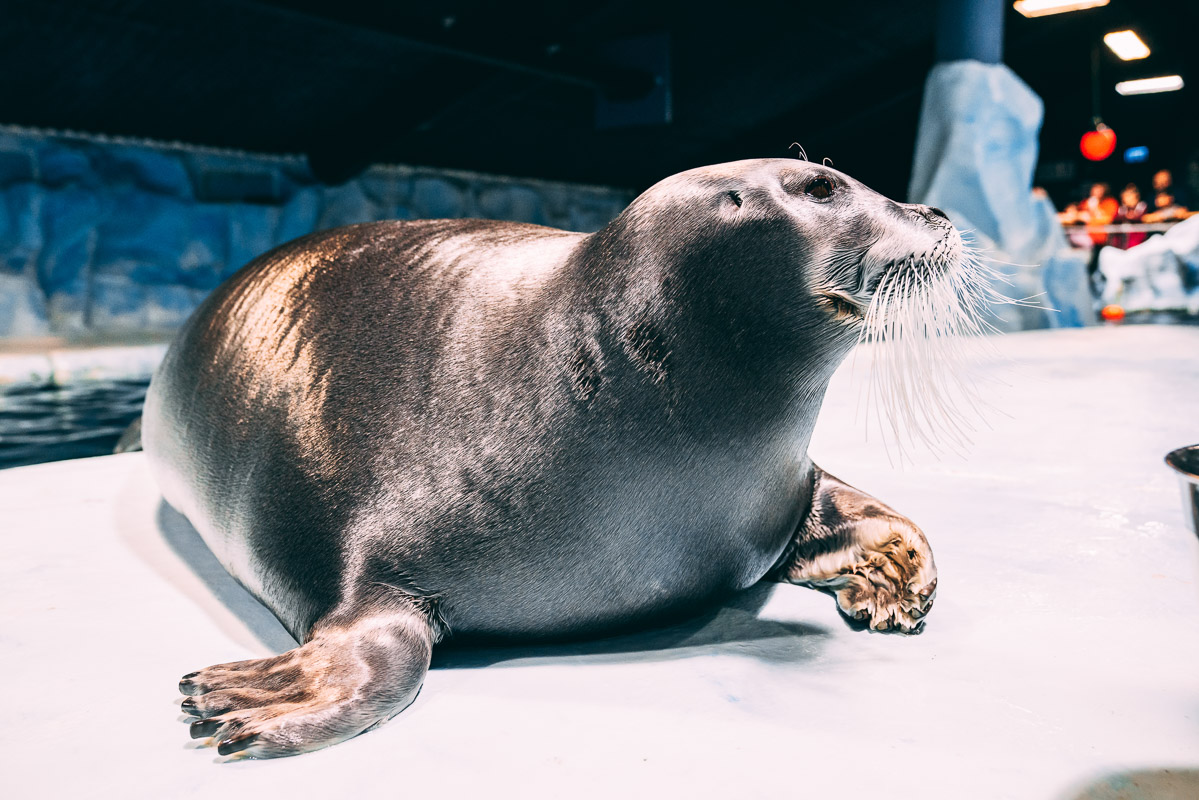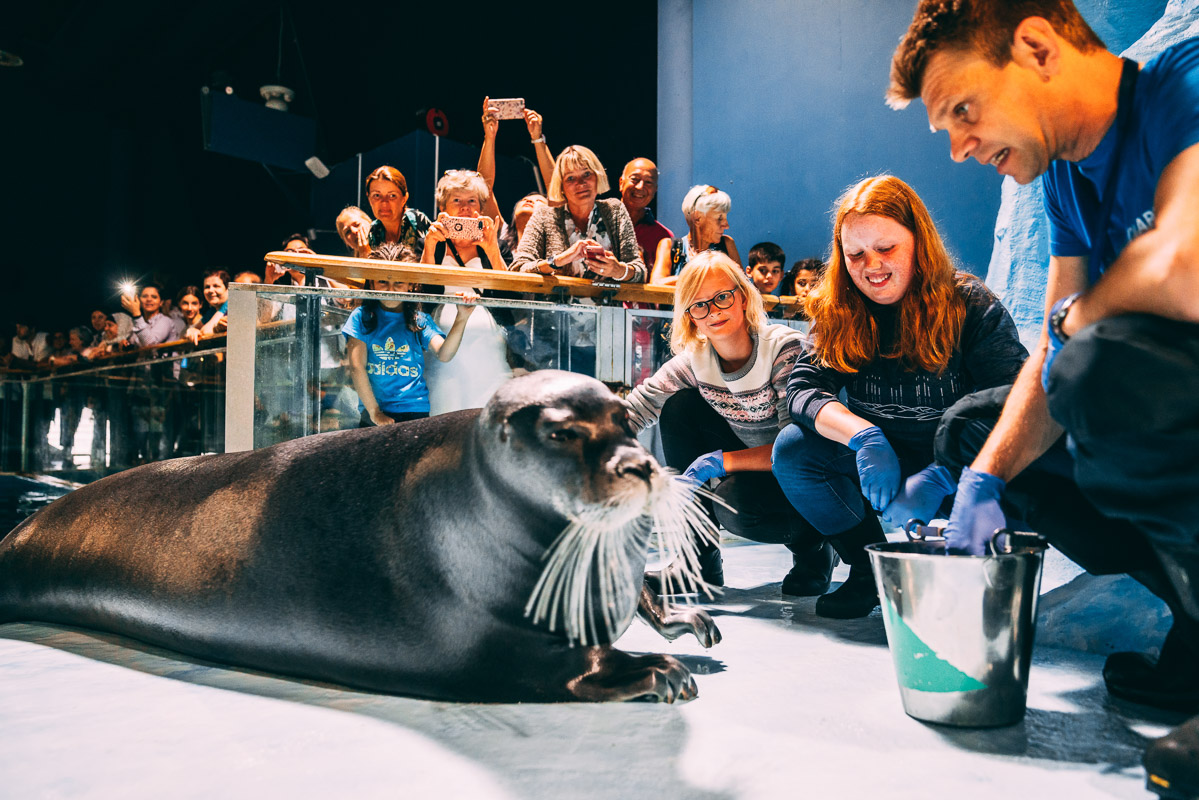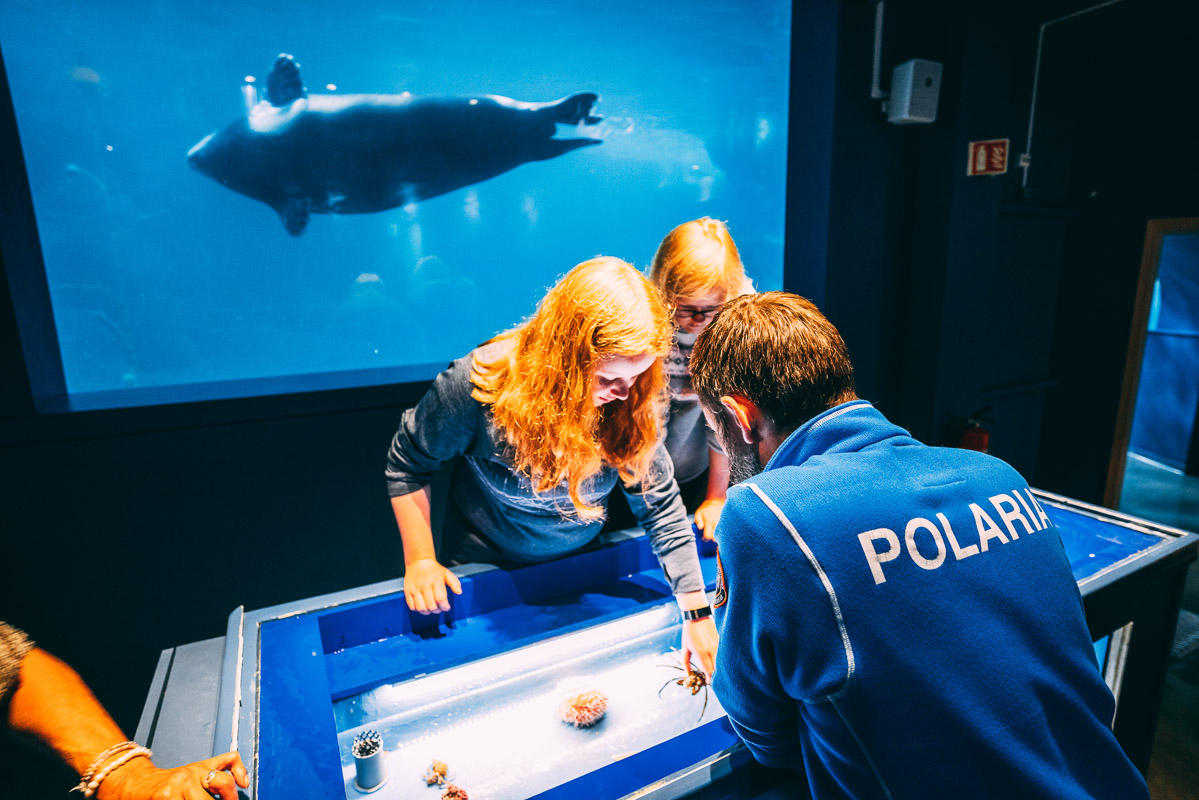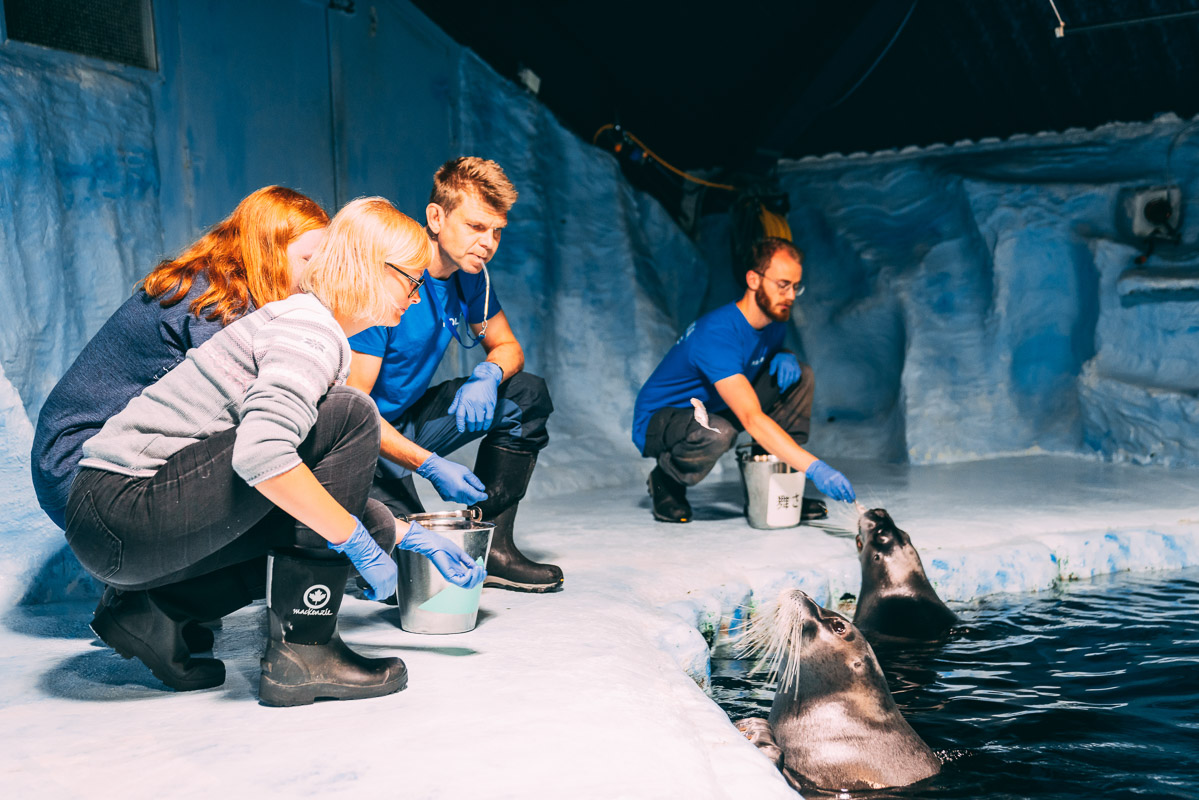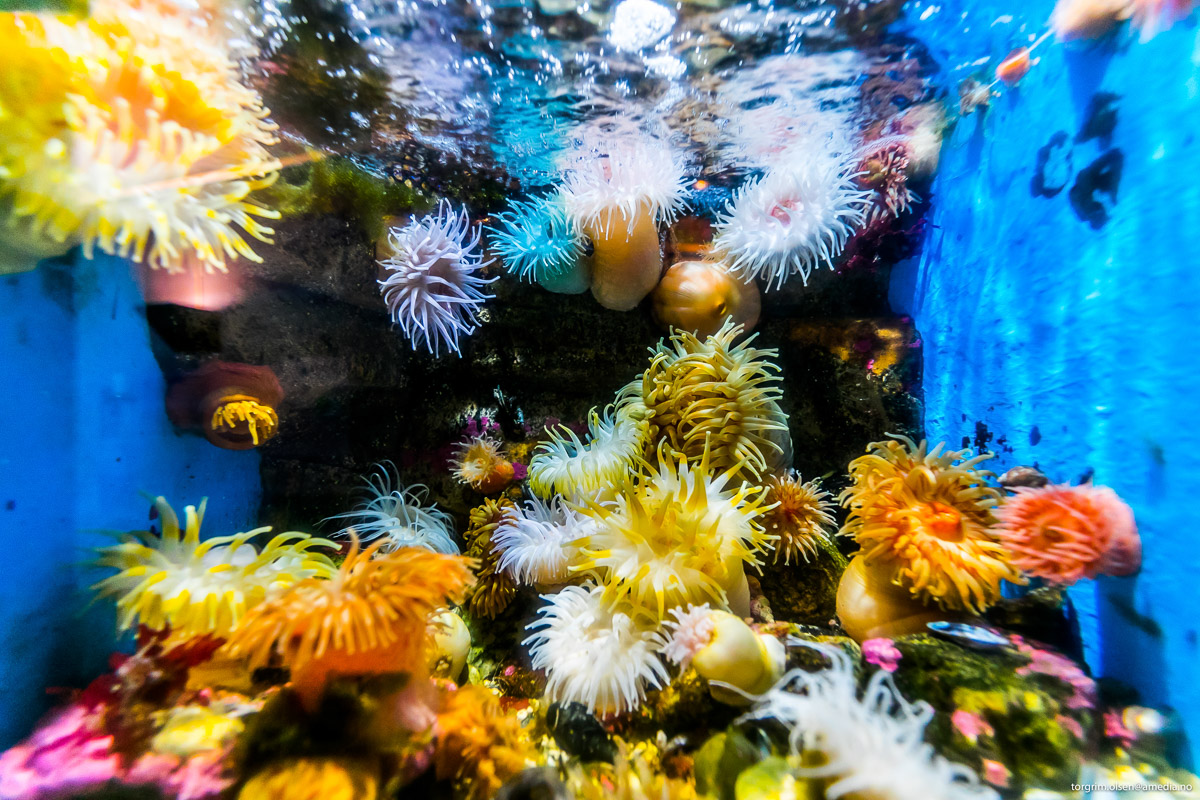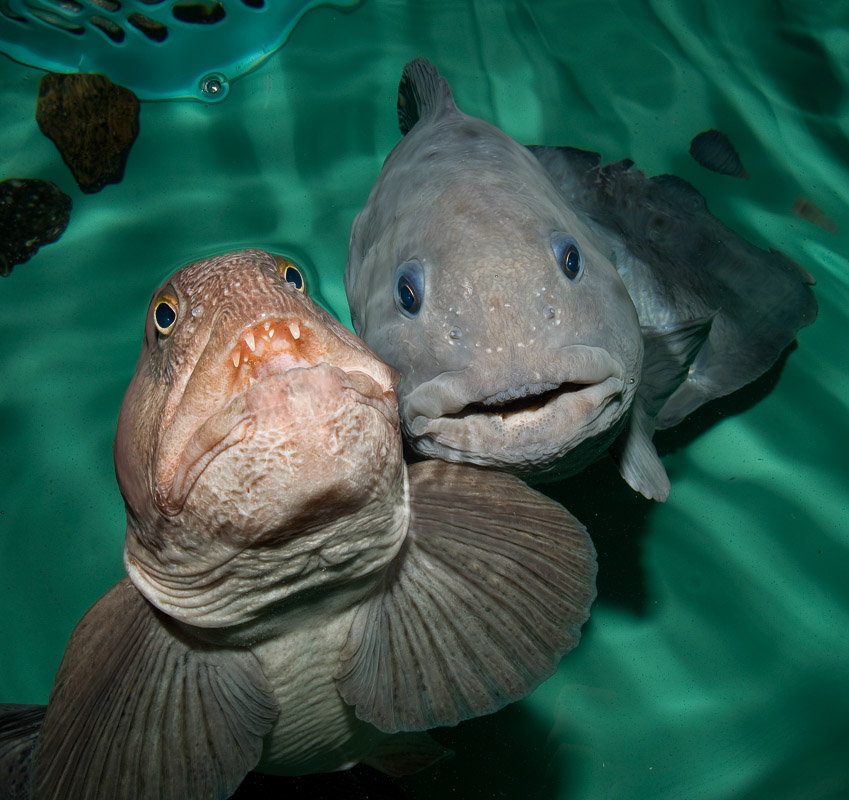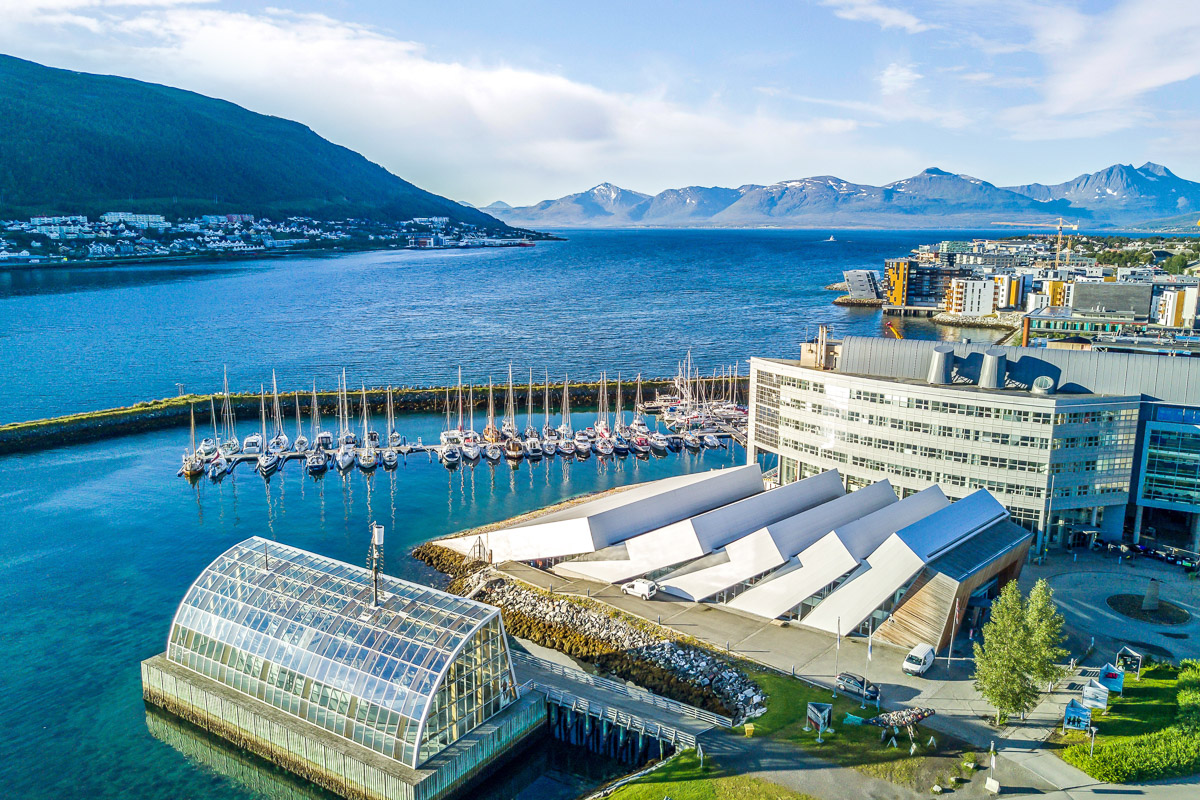Polaria is one of Northern Norway’s most popular attractions — and with good reason, as inquisitive adults and children alike can learn so much here and have a lot of fun at the same time.
Just outside the centre of Tromsø, the Gateway to the Arctic Ocean, in a building shaped like blocks of ice that are calving into the sea, is Polaria, a visitor centre all about the Arctic region and research in the polar regions. Visitors first enter the cinema to watch a panoramic film, before being taken along the “Arctic Walkway” through a sequence of aquariums and fascinating exhibits.
The little auk is also known as “tromsøværing”
The little auk is a small, black-and-white bird closely related to the razorbill, common and black guillemot and puffin. However, unlike those species, it has a shrill, piercing and constant cry. That is why it is humorously referred to as the “tromsøværing” (an inhabitant of Tromsø) on Svalbard. In Ivo Caprino’s film “Svalbard – Arctic Wilderness”, we follow the little auk over the pyramid-shaped peaks, wide fjords and glaciers of Svalbard. Close-up photographs show us the fragile, brightly coloured flowers of the tundra, while the raucous noise of the bird cliffs, waddling walruses and polar bears jumping from ice floe to ice floe give an impression of the fauna on the archipelago. In some places, we also catch glimpses of rusting iron and silvery timbers from the old hunting settlements.
A Northern Lights film explains the Aurora
The Northern Lights film gives a quick and easy-to-understand explanation of the phenomenon in just eight and a half minutes. Plasma from the surface of the Sun is ejected during solar storms and thrown out into space. When it reaches Earth’s magnetic field, the plasma is forced around Earth by the magnetic field. If it enters Earth’s atmosphere on the daylight side of the planet, it becomes the daytime Northern Lights, which can only be seen on Svalbard and in other areas of the high Arctic. If it enters from the night side in an explosive movement, the Northern Lights are created when the particles reach the upper layer of the atmosphere. A fascinating collection of recordings from the Tromsø area are then shown, depicting both the city itself and the surrounding area.
The rapid ice melt is laid bare in the museums exhibits
From the cinema, visitors are taken to an exhibition on one of the most worrying aspects of climate change that we are witnessing — the melting of the ice caps. Visitors can select short videos about various aspects of life in the Arctic: glaciers under the summer sun with meltwater gushing out from beneath the ice, glaciers collapsing and historical photographs showing how the glaciers have receded. These short films produced by the BBC show the enormous forces that are involved now that the ice has begun to move.
A seal uses it’s whiskers to hunt
The seal pool is perhaps the attraction that visitors love most of all. There are two species of seal: the bearded seal and the common or harbour seal. There are actually quite a few differences between them. The bearded seal, also known as the square flipper seal, has a tuft of long whiskers on either side of its muzzle. The seals use these whiskers to search for shellfish and small fish on the seabed. The bearded seal lives in the marine areas around Svalbard, where it is dark during the winter. The darkness forces the seal to find its way around using its whiskers. Bearded seals also swim relatively sedately, as their prey rests on the seabed. They can frequently be seen swimming at modest speeds, often on their back, around the seal pool.
Seals are like torpedoes in water
Common seals swim faster than their bearded cousins. They live along the Norwegian coast and in the North Sea basin and catch fish. They have to swim fast in order to catch the fish, and in the seal pool at Polaria, they shoot through the water like torpedoes. They then jump up onto the rim around the pool, lumber around and then dive back into the pool again. As soon as any visitors arrive, they swim over and have a look. It makes you wonder who enjoys watching who the most.
Feeding time is combined with training
The seals are fed twice a day, and the handlers take these opportunities to train the seals. This is primarily to give the seals some challenges and something to do. It takes time for the seals to learn how to jump through hoops, play with a ball, do pirouettes and master the many other tasks they are trained to do, and it presents them with a challenge. These events often attract a large audience, which the seals seem to enjoy.
The Aquarium is filled with Northern Norwegian species
A large aquarium is home to a variety of fish that are widespread in the waters of Northern Norway. The most striking of these is the catfish, of which there are a number of different kinds. These are sociable creatures and often lie one on top of one another. Halibut, with their twisted heads, blend in almost perfectly with the bottom of the tank, and flounders are also well camouflaged. The bearded cod and pollack are more conventional in appearance.
Blue King Crabs are albino
In one of the large aquariums, visitors can see a host of king crabs, mostly red-brown in colour but blue-tinged albinos can also be spotted. King crabs originate from the northern Pacific Ocean and were released into the Barents Sea by the Russians in the 1970s. You can dip your fingers into some of the aquariums and reach down to the sea anemones. You can feel the tiny dose of toxic venom that they use to stun the small fish they eat. Small aquariums show the many different kinds of small, colourful fish and marine creatures that can be found in Arctic waters.
Polaria is well suited for families
Polaria is especially popular with children. The centre features a play area for young children with cushions and toy Arctic animals. Slightly older children can go up to the bridge of the M/S Polaria and steer the ship under the Tromsø bridge and right out to the open sea on a simulator. Polaria also has an extensive calendar of events for both young and older children. There is a particularly well-stocked shop and a café.

Visit Tromsø helps you plan your stay
The local tourism organisation is your guide to all things interesting in Tromsø

